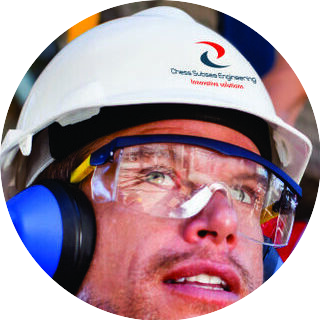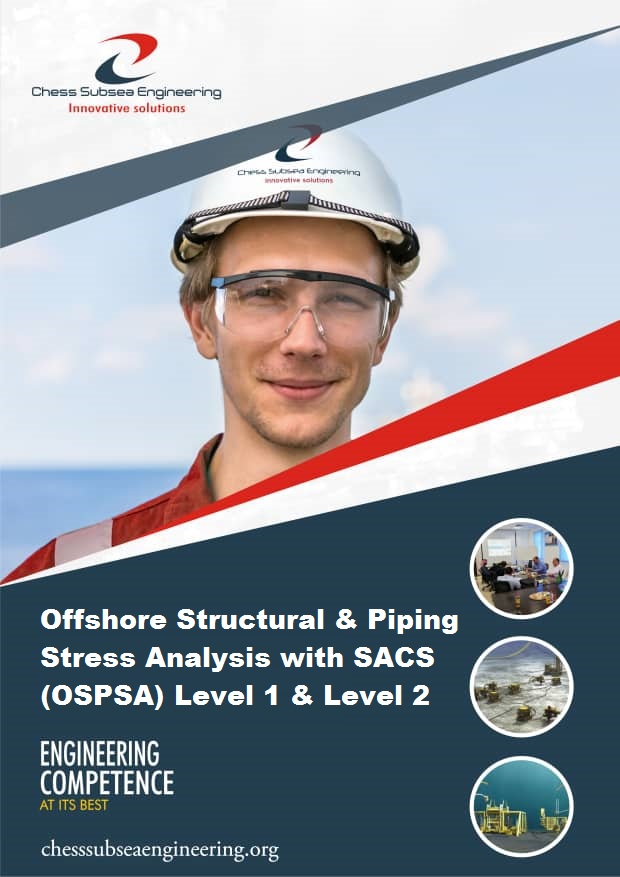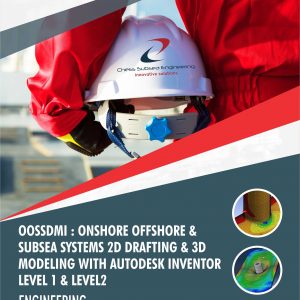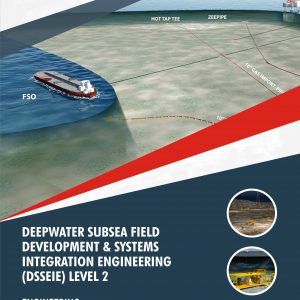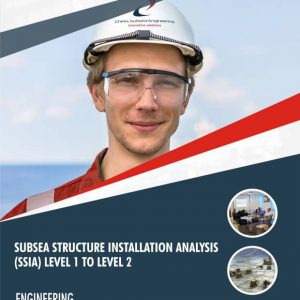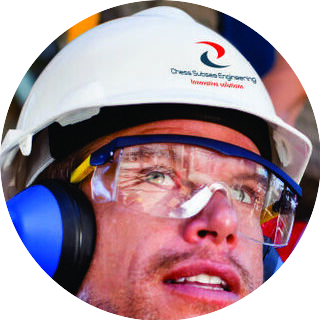Description
Offshore structural and piping stress analysis is a critical aspect of offshore engineering design that involves evaluating the structural and piping components of offshore installations to ensure that they can withstand the extreme environmental loads and operating conditions encountered offshore. This analysis is typically conducted using specialized software tools and advanced computational methods to model the structural and piping components and simulate their response to various load cases.
Structural analysis involves evaluating the strength and stability of offshore structures such as platforms, jackets, and subsea templates, under various load scenarios such as wave, wind, and seismic loads. The analysis includes modeling the structure and its components, and applying loads and boundary conditions to simulate the actual operating conditions. The analysis results are used to ensure that the structure is designed to meet the required safety and performance standards, and to identify potential areas of weakness that may require strengthening or reinforcement.
Piping stress analysis involves evaluating the mechanical behavior of piping systems such as risers, flowlines, and pipelines, under various load scenarios such as pressure, thermal expansion, and external loads. The analysis includes modeling the piping system and its components, and applying loads and boundary conditions to simulate the actual operating conditions. The analysis results are used to ensure that the piping system is designed to meet the required safety and performance standards, and to identify potential areas of weakness that may require redesign or reinforcement.
Offshore structural and piping stress analysis is a complex process that requires a detailed understanding of the design requirements, the environmental loads, and the behavior of the structural and piping components. It also requires the use of advanced software tools and simulation techniques to model and analyze the components accurately. This analysis is critical to ensuring the safety and reliability of offshore installations and reducing the risk of catastrophic failure.
Offshore Structural & Piping Stress Analysis (OSPSA) with SACS Level 1 & Level 2 covers Design of Fixed Offshore Platforms, In-Place Analysis, Wave Load Theories, Wind Load Design for Topsides, Deck Installation – Lift Analysis, Earthquake Analysis, Member Code Checks, Non-Linear Dropped Object Analysis, Non-Linear Dynamic Blast Analysis, Wind Turbine Fatigue Analysis, Wind Turbine Fatigue, Analysis, Interface to Turbine Analysis Stress Cycle Counting, Ship Impact Analysis, Platform & Vessel Stability, Platform & Vessel Motions, Load-Out Analysis, Analysis During Fabrication, Transportation Analysis, Lift Analysis, Operation Design Analysis, Launch Time History Analysis, Flotation and Upending Analysis, Pile-Soil Interaction (PSI) Analysis, Fatigue Analysis, Spectral Wind Fatigue Analysis, Seastate and Data Files, Platform Analysis and Design, Running Stress Analysis and Post Processing, Design of Subsea Structures and Transportation and more.
Course Outline
General Introduction and Overview of FPSO Design Considerations
Design of Fixed Offshore Platforms
In-Place Analysis
Wave Load Theories
Wind Load Design for Topsides
Deck Installation – Lift Analysis
Earthquake Analysis
Member Code Checks
Non-Linear Dropped Object Analysis
Non-Linear Dynamic Blast Analysis
Wind Turbine Fatigue Analysis
Wind Turbine Fatigue Analysis
Interface to Turbine Analysis Stress Cycle Counting
Ship Impact Analysis.
Platform & Vessel Stability
Platform & Vessel Motions
Load-Out Analysis
Analysis During Fabrication
Transportation Analysis
Lift Analysis
Operation Design Analysis
Launch Time History Analysis
Flotation and Upending Analysis
Pile-Soil Interaction (PSI) Analysis
Fatigue Analysis
Spectral Wind Fatigue Analysis
Seastate and Data Files
Platform Analysis and Design
Running Stress Analysis and Post Processing
Design of Subsea Structures and Transportation
Technical Support References
Ref 1: Jacket Fixed Platforms Design Methodology
Ref 2: Loads on Jacket Fixed Platforms
Ref 3: Jacket Fixed Platforms Materials & Corrosion
Ref 4: Jacket Fixed Platforms Inspection
Ref 5: Jacket Fixed Platforms Maintenance
Ref 6: Jacket Fixed Platforms Repair
Ref 7: Jacket Fixed Platforms Simulation with SACS
Ref 8: Jacket Fixed Platforms In-place Analyses with SACS
Ref 9: Jacket Fixed Platforms Dynamic Analysis with SACS
Ref 10: Jacket Fixed Platforms Fatigue Analysis with SACS
Ref 11: Jacket Fixed Platforms Push Over Analysis with SACS
Assessment
Participant underpinning knowledge of Offshore Structural & Piping Stress Analysis with SACS Level 1 & Level 2 will be accessed with design to be presented towards end of course.
Professional Certificate
Issued directly by Chess Subsea Engineering Europe.
How to Register
Click here to download registeration booklet on msword and email completed booklet to info@chesssubseaengineering.org directly.

